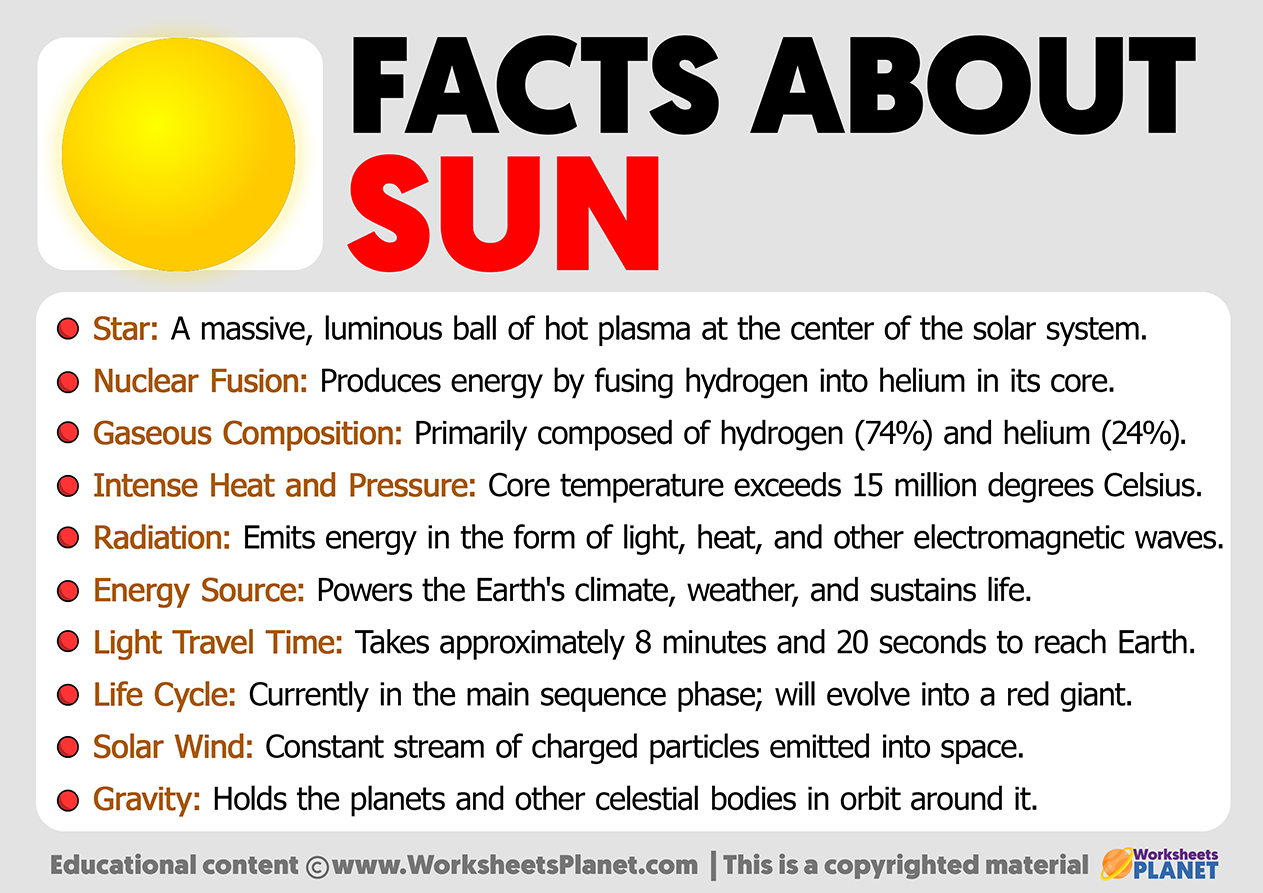The Sun is a star at the center of our solar system. It primarily consists of hydrogen and helium undergoing nuclear fusion, producing immense heat and light.
It provides energy essential for life on Earth and influences our planet’s climate and weather. The Sun’s gravitational pull keeps the solar system in orbit.

- Star: A massive, luminous ball of hot plasma at the center of the solar system.
- Nuclear Fusion: Produces energy by fusing hydrogen into helium in its core.
- Gaseous Composition: Primarily composed of hydrogen (74%) and helium (24%).
- Intense Heat and Pressure: Core temperature exceeds 15 million degrees Celsius.
- Radiation: Emits energy in the form of light, heat, and other electromagnetic waves.
- Energy Source: Powers the Earth’s climate, weather, and sustains life.
- Light Travel Time: Takes approximately 8 minutes and 20 seconds to reach Earth.
- Life Cycle: Currently in the main sequence phase; will evolve into a red giant.
- Solar Wind: Constant stream of charged particles emitted into space.
- Gravity: Holds the planets and other celestial bodies in orbit around it.

